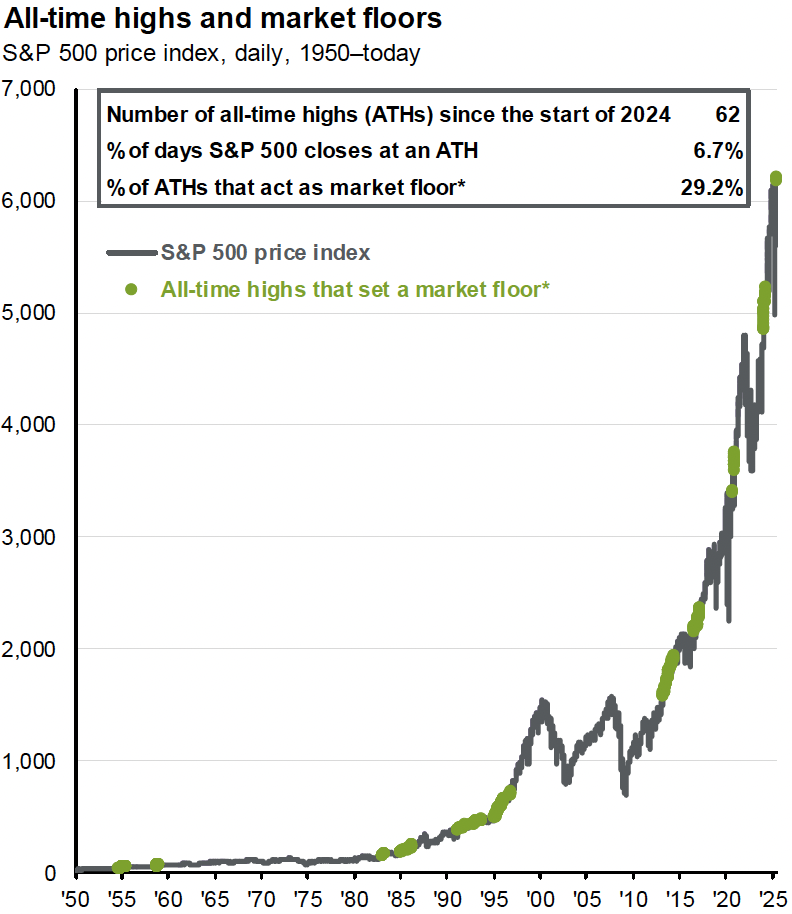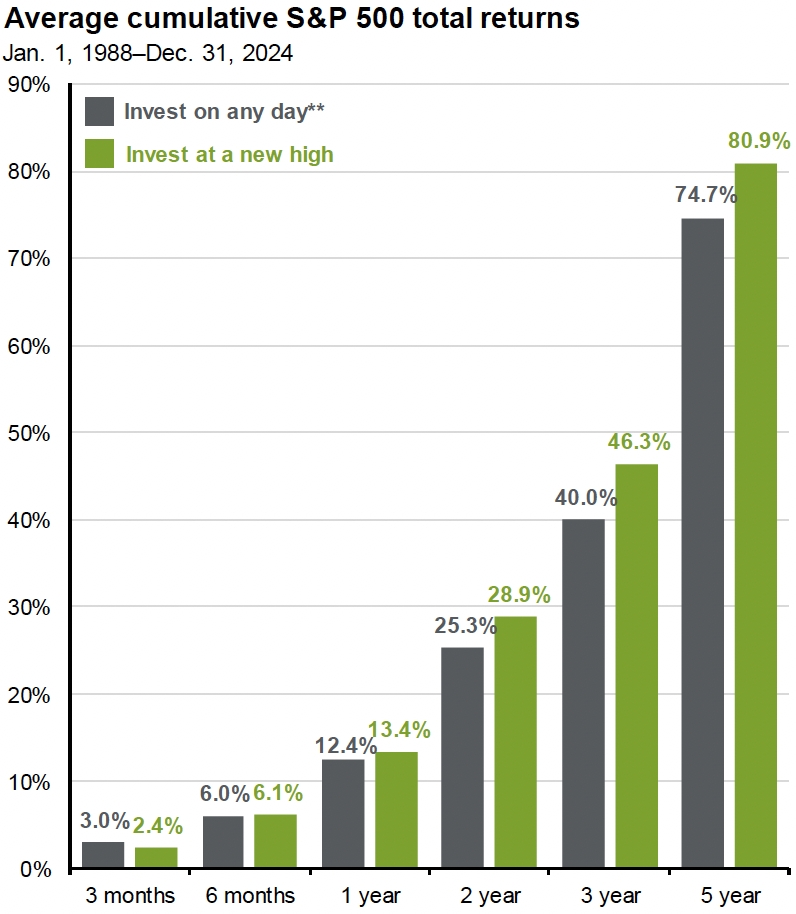
Should You Invest at All-Time Highs?
The S&P 500 recently notched another all-time high. Lately, it seems like it is happening almost daily. And if your instinct is to hesitate, you're not alone.
Headlines often make these moments sound ominous: “Market at Record Levels!” “Stocks Are Expensive Again!” And naturally, you wonder: Is now really the right time to invest?
Well, I’m an engineer, so let’s unpack the data. Because while it may feel like you’re “buying at the top,” history tells a different story.
All-Time Highs Happen… a Lot
From 1950 through 2024, the S&P 500 has closed at a record high over 1,250 times, or an average of 16 new highs per year. Since the start of 2024 alone, there have been 62 new all-time highs!
Far from being rare, new highs are a normal part of long-term investing. Markets grow over time. And with that growth comes a steady progression of new peaks. As long term investors, we don’t run from new highs – we welcome them. They are a sign of progress. In fact, all-time highs happen all around us. Just look at your age. You set a new all-time high every day.
JPMorgan recently highlighted this in a powerful chart showing that many all-time highs ultimately become new floors, not ceilings. Look at the green lines! Investors often fear a fall, but history suggests those highs tend to support future gains more often than not.

What Happens After All-Time Highs?
The natural fear is that buying at a high sets you up for losses. But actual returns tell a more reassuring story:
- Average 1-year return after an all-time high: 13.4%
- Average cumulative 3-year return: 46.3%
- Average cumulative 5-year return: 80.9%

To me, the green bars are a bit comforting.
Need more reassurance? Since 1950, the S&P 500 has dropped more than 10% in the year following an all-time high only 9% of the time. AND it has never ended a 10-year period more than 10% lower following an all-time high. That’s a powerful reminder for us long-term investors.
Why Timing the Market Can Be Costly
Waiting for a dip sounds like a smart move… until you realize how often those dips don’t arrive on your schedule. Markets can remain at or near highs for months, or even years.
Ben Carlson, one of my favorite financial bloggers who publishes the blog A Wealth of Common Sense, puts it this way: Even though it can feel smart to wait on the sidelines for a better entry point, the historical odds favor just getting invested. Because most of the time, the market doesn’t pause for you (It’s up nearly three out of every four years).
Trying to time the market can delay your progress, keep your money on the sidelines, and increase the risk of missing the next run up. All-time highs come in spurts, and you need to be invested to take full advantage of them.
A Long-Term Perspective Wins
To be clear: This isn’t a recommendation to blindly chase the market. But it is a reminder that investing at all-time highs has historically worked out just fine for long-term investors.
And if your plan is sound, built around your goals and time horizon (and let’s be honest, crafted by us), then the current market level shouldn’t change your approach.
In fact, sticking to your plan through all kinds of markets is exactly how long-term success is achieved. 
Chart Source: FactSet, S&P, JPMorgan Guide to the Markets 2025 Q2
1. Market floor is defined as an all-time high from which the market never fell more than 5%.
2. “Invest on any day” represents average of forward returns for the entire time period, whereas “Invest at a new high” represents average rolling forward returns calculated from each new S&P 500 high for the subsequent 3-month, 6-month, 1-year, 2-year, 3-year, and 5-year intervals, with data starting 1/1/1988 through 12/31/2024

